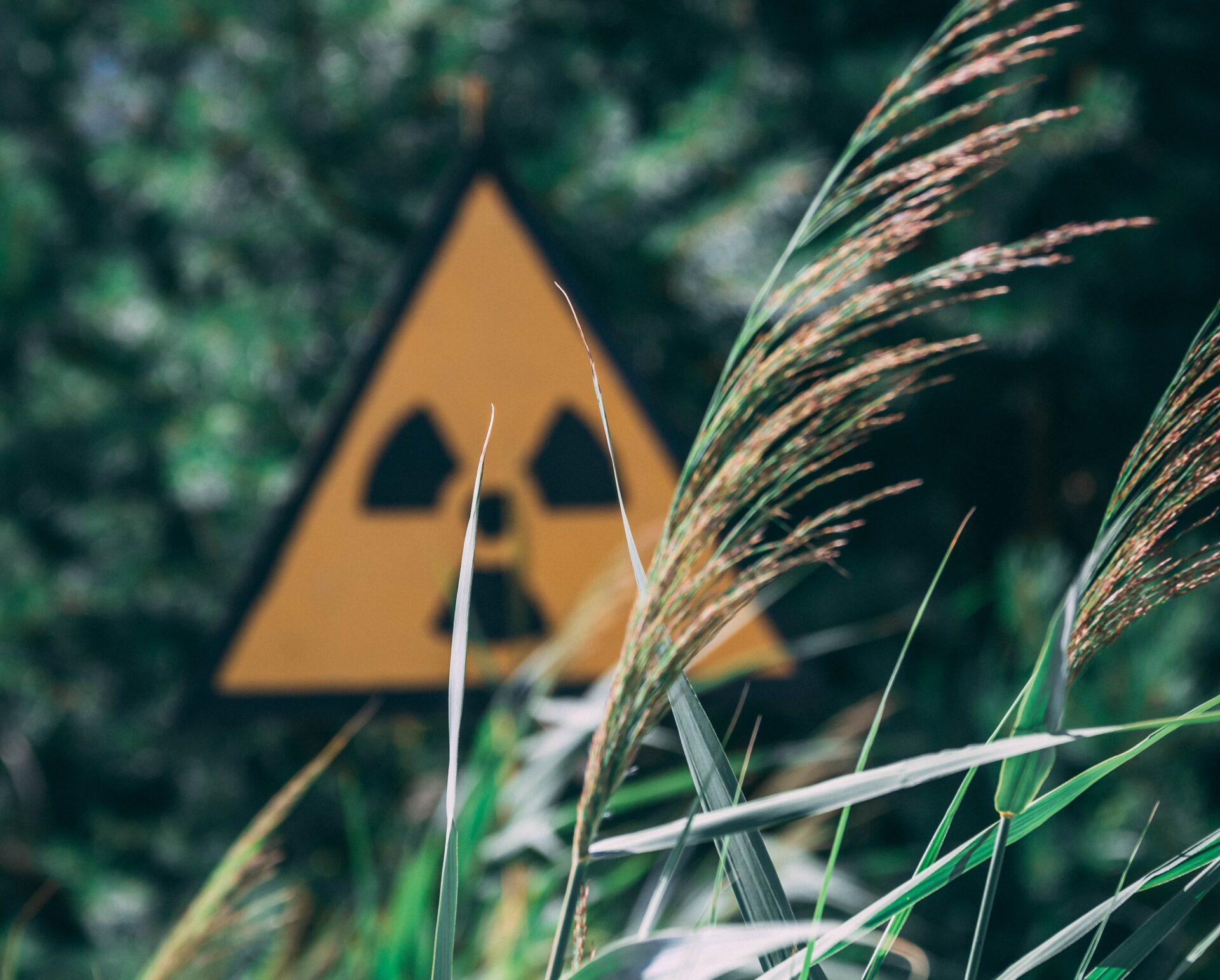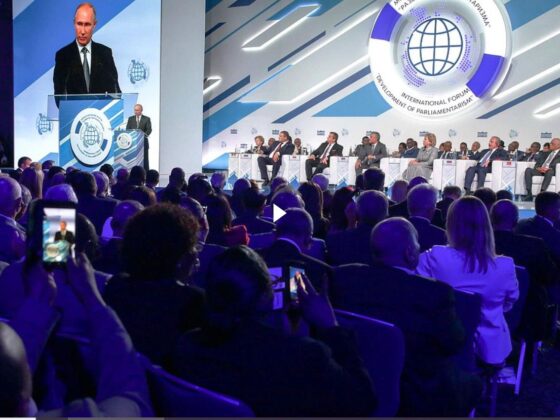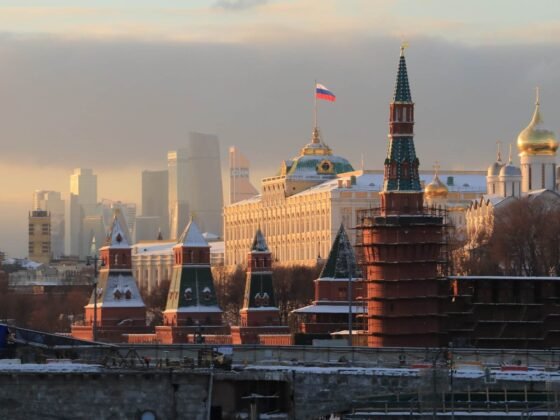(PONARS Eurasia Commentary) Should a nuclear war “never be unleashed?” Can nuclear weapons be used to “ensure the safety of the Russian people?” Both, according to President Vladimir Putin, who has become fond of alternating assertive and conciliatory tones in his messaging on the conditions for the use of nuclear arms. Such discourse comes as he tries to coerce Ukraine into accepting his land grabs and prevent the West from escalating assistance to Kyiv, all while keeping China content.
Russia’s conventional forces barely had time to launch their multi-pronged offensive into Ukraine on Putin’s orders in the early hours of February 24, 2022, when the autocrat was already on national television, issuing a veiled threat to use nuclear weapons to dissuade NATO from interfering on Ukraine’s side. “No matter who tries to stand in our way or all the more so create threats for our country and our people, they must know that Russia will respond immediately, and the consequences will be such as you have never seen in your entire history,” Putin asserted, in what would become the first in a devil’s dozen of public statements on the use of nuclear weapons that he issued from February 24 to December 9. (See a compilation of statements by Putin and his top aides here).
Perhaps concerned that his initial warning was not convincing enough, the Russian president then rattled his nuclear saber again on February 27, accusing NATO countries of “aggressive statements” and ordering his top brass to “put the Russian Army’s deterrence forces on high combat alert.” The leader then took a two-month break from nuclear saber-rattling as his ground forces managed to capture a land bridge to Crimea, but his key aides filled the vacuum. With the Russian forces compelled to retreat from the suburbs of Kyiv in early April in what became the first major setback for his “special military operation,” Putin, apparently, felt it was necessary to resume implicit threats to use nuclear weapons. Speaking to Russia’s federal legislators about the war in Ukraine on April 27, Putin promised that “our retaliatory strikes will be lightning fast … [i]f anyone intends to intervene from the outside.”
Putin then took another two-month pause before returning to the subject of using nuclear weapons, which he did in written, conciliatory form. He joined President Xi Jinping, Prime Minister Narendra Modi, and other BRICS leaders on June 23, 2022, to sign a declaration that reaffirmed the P5’s January 3, 2022, statement that “a nuclear war cannot be won and must never be fought.” Only two days later, however, Putin rattled his nuclear saber again, this time making an explicit pledge to upgrade some Belarussian warplanes to be able to carry Russian nuclear weapons. When he hosted Belarussian President Aliaksandr Lukashenka on June 25, Putin announced they would modernize some Belarusian warplanes to be nuclear-capable. Russian weapons specialists then reportedly did so in August, but by then, Putin had dialed down his nuclear rhetoric (again), writing to the Non-Proliferation of Nuclear Weapons (NPT) conference that “there can be no winners in a nuclear war, and it should never be unleashed.”
Putin waited a month and a half to brandish his special weapons yet again, dropping the first public hint that he would be willing to go beyond the conditions for the use of nuclear weapons set in Russia’s strategic documents when Ukrainian forces advanced and captured large swaths of land in the Kharkiv region. “In the event of a threat to the territorial integrity of our country and to defend Russia and our people, we will certainly make use of all weapons systems available to us,” Putin said on September 21. “This is not a bluff,” he followed up in a speech meant to announce a “partial mobilization” to reinforce Russia’s depleted invading force. Putin then again reiterated the implicit threat to resort to nuclear weapons on September 30 in remarks on the occasion of annexing parts of southeastern Ukraine, asserting: “We will defend our land with all the forces and resources we have, and we will do everything we can to ensure the safety of our people.”
If those implicit threats were not enough, Putin then went explicit during his Q&A at the meeting of the Valdai Club on October 27, claiming that Russia’s military doctrine allows the use of nuclear weapons to “protect its sovereignty, territorial integrity and to ensure the safety of the Russian people,” even though there is no such language in the 2014 document.[1] As I wrote earlier, should Putin have meant what he said on September 21 and October 27, then the retreat of Russian forces from newly-annexed parts of the Kherson region would have constituted a cause for using nuclear weapons, per the conditions Putin voiced on these two occasions. But fortunately, that did not happen. Therefore, while Putin’s repeated nuclear saber-rattling is probably something Western leaders should keep in mind when deciding how to avoid nuclear escalation while helping Ukraine, the Russian leader’s threats to expand the conditions under which he would resort to nuclear weapons appeared to have no game-changing impact on the Ukrainian military-political leadership’s resolve to retake its territories.
Although it is difficult to nail down exactly when it happened, at some point, Putin’s increasingly loose talk on nuclear weapons use began to seriously concern his fellow autocrat in China. The latter reportedly registered his opposition to threats of using nuclear weapons, including in the context of the Ukraine war, on three occasions in November 2022 alone. These included his meeting with German Chancellor Olaf Scholz on November 4, his meeting with U.S. President Joe Biden on November 14, and his signing of the G-20 summit’s November 16 final declaration. (India’s Modi has also repeatedly registered his concern over Putin’s nuclear saber-rattling and signed the G-20 declaration along with Russian Foreign Minister Sergei Lavrov.) Post hoc ergo propter hoc (or not), Putin chose not to repeat his earlier claims that Russia could use nuclear weapons if the safety of the Russian people and the territorial integrity of Russia were threatened in his first public remarks on the subject since Xi’s repeated public expressions of opposition to nuclear threats in November. Moreover, in his December 7 remarks, Putin vowed that “we are not going to wield these weapons like a razor, running around the world.”
Two days later, however, Putin returned to the theme of liberalizing Russia’s conditions for the use of nuclear weapons, asserting that the Russian leadership “should think” about adopting the concept of a disarming strike. Until then, Putin had repeatedly stuck to the concept of “otvetno-vstrechny udar,” which has often been translated in Western publications as “launch-on-warning” and which the Kremlin staff translated as either “reciprocal counter strike” or “retaliatory strike.” A transition from the launch-on-warning concept to the disarming first strike concept, which has been defined as an “attack on an enemy’s nuclear arsenal that effectively prevents retaliation against the attacker,” would signal the adoption of a more aggressive posture, in my view.
That December 9 statement was the latest that Putin made on conditions for the use of nuclear weapons (at the time of this writing). It is doubtful that it is the last time, even though his nuclear messaging has so far failed to coerce the Ukrainian military-political leadership. In fact, the Russian president can be expected to continue playing both bad cop and good cop when “thinking out loud” about the conditions under which Russia could resort to nuclear weapons, as long as he thinks such alterations can help him deter the West from greater involvement in Ukraine’s war efforts while also accommodating China’s wish that Russia avoids rattling its nuclear saber too loudly. It does not look likely that such repeated rattling of Russian nuclear weapons will escalate into the actual use of it. After all, Putin knows that if there is something that can unite not just the collective West but also China and most of the world in treating Russia as a profound international security threat, it would be his ordering a nuclear strike on Ukraine.
[1] Both Russia’s 2014 Military Doctrine and 2020 Basic Principles of State Policy on Nuclear Deterrence say: “RF reserves the right to use nuclear weapons in response to the use of nuclear and other types of WMD against it and/or its allies, as well as in the event of aggression against the Russian Federation with the use of conventional weapons when the very existence of the state is in jeopardy.” The 2020 principles also list four conditions “specifying the possibility of nuclear weapons use by the Russian Federation,” including “a) arrival of reliable data on a launch of ballistic missiles attacking the territory of RF and/or its allies; b) use of nuclear weapons or other types of WMD by an adversary against RFand/or its allies; c) attack by adversary against critical governmental or military sites of RF, disruption of which would undermine nuclear forces response actions; and d) aggression against RF with the use of conventional weapons when the very existence of the state is in jeopardy.”
Simon Saradzhyan is the Founding Director of the Russia Matters Project at the Harvard Kennedy School’s Belfer Center for Science and International Affairs.











